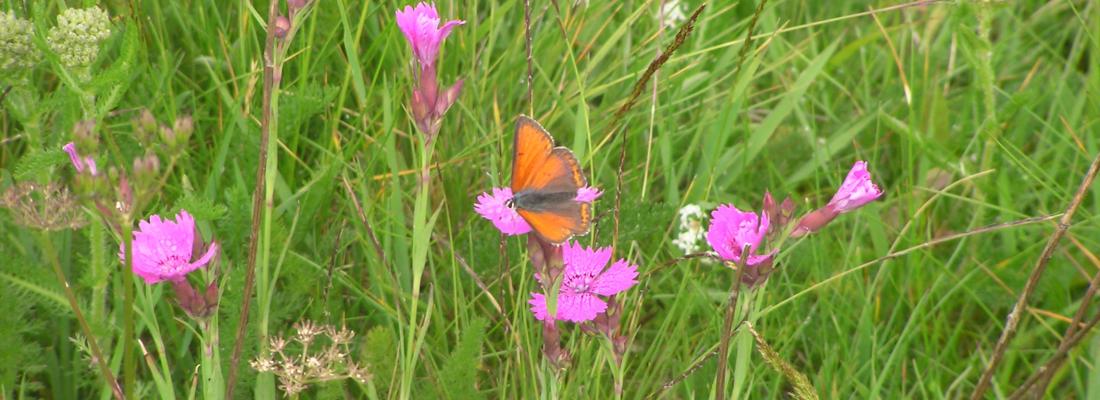Agroecology Reading time 6 min
Agroecology: an ally for nature, the climate and agriculture in Europe
Agroecology is a solution for combating climate change and biodiversity loss. Indeed, a meta-analysis of 170 studies conducted in 21 European countries has shown that agroecological practices promote biological diversity and carbon storage in soils, while reducing certain greenhouse gas emissions.
Published on 18 September 2025

Agriculture contributes significantly to exceeding planetary boundaries: climate change, biodiversity loss and pollution. In particular, systems that rely heavily on inputs (synthetic fertilisers, plant protection products, agricultural equipment, energy) contribute significantly to greenhouse gas emissions and soil degradation. Are there any credible alternative models? Does agroecology have a role to play? What can we really expect from it? Agroecology is based on several key principles, including promoting crop and species diversity, maintaining living soils, reducing dependence on chemical inputs, and reintegrating livestock and crops into more balanced systems. In practical terms, this can range from modest changes (replacing synthetic fertilisers with manure) to a complete overhaul of livestock systems, for example by combining several animal and plant species, thus mimicking the functioning of a natural ecosystem.
As part of the Agroecology-TRANSECT project, a team of European researchers, including several from the Herbivores Joint Research Unit and the Grassland Ecosystem Research Unit, sifted through 170 scientific studies with the aim of measuring the effects of agroecological practices on biodiversity, soil carbon storage and greenhouse gas emissions in Europe. This approach, known as meta-analysis, combines scattered results to obtain an overall view.
What are the effects on biodiversity?
The results are encouraging: in most cases, agroecological practices promote the diversity of living organisms, including pollinating insects, plants, earthworms and soil microorganisms. This increased biodiversity is not only an ecological indicator; it directly supports the services provided by nature to farmers, such as pollination and soil fertility.
Only market gardening systems (based on the publications reviewed, which are fewer than those on arable farming and livestock farming) do not show any significant positive effects on biodiversity when agroecological practices are adopted, despite the heavy use of pesticides in the conventional systems with which they were compared.
What about the climate?
This meta-analysis shows that agroecology increases organic carbon stocks in soils and reduces emissions of nitrous oxide (N₂O), a powerful greenhouse gas mainly generated by agricultural activities. However, its effect on carbon dioxide (CO₂) and methane (CH₄) is much less clear. Sometimes, living soils release more CO₂ through respiration, which is a sign of more intense biological activity. This is not necessarily negative, but it limits the impact on the net result for this gas.
A win-win strategy
Whether switching from a conventional system to a simple ‘substitute’ model (e.g., replacing a chemical input with an organic equivalent) or to a completely redesigned system, the results show positive effects on biodiversity and climate. In most studies measuring both biodiversity and climate, researchers observe joint benefits for biodiversity and soil carbon storage.
However, some gaps in knowledge will require further research: the effects on certain gases such as methane remain poorly understood, and few studies have been conducted to assess the overall emissions balance at farm level. Furthermore, the impact on productivity and profitability has not been included in this analysis.
Agroecology is not a one-size-fits-all solution, but rather a set of practices that must be adapted to local contexts. Adopting agroecology in Europe improves biodiversity and helps mitigate global warming, with particular benefits for soil carbon stocks and reducing nitrous oxide emissions. These results are in line with the objectives set by the European Green Deal and the biodiversity strategy. They remind us that a more environmentally friendly form of agriculture is possible and beneficial for society as a whole.
References: Cian Blaix, Bertrand Dumont, Juliette M.G. Bloor, Cecilia Zagaria, Géraldine Fleurance, Frédéric Joly, Olivier Huguenin-Elie, 2026, Agroecological interventions increase biodiversity and the potential for climate change mitigation in Europe, Agriculture, Ecosystems & Environment, Volume 395,109938, https://doi.org/10.1016/j.agee.2025.109938 .
Agroecology-TRANSECT is a European research project exploring how nature-friendly farming practices work and develop in 10 countries across Europe and beyond, and how we can use them to accelerate change for the benefit of people, animals and the environment.
